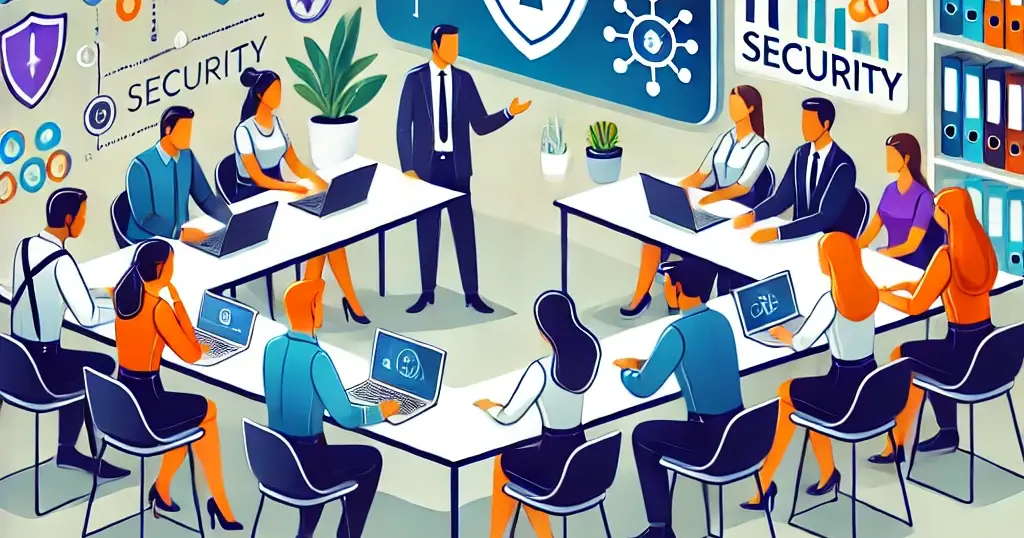In today’s digitally driven workplaces, IT security training is no longer optional. With cyber threats becoming more sophisticated and widespread, equipping employees to recognise and tackle these risks is essential for protecting your organisation. A single mistake—like clicking on a phishing link or using a weak password—can lead to devastating consequences. By providing proper training, you turn your team into a proactive line of defence, reducing vulnerabilities and fostering a culture where security comes first.
Grasping the Basics of IT Security
IT security isn’t just for tech experts—every employee needs to understand the basics. This foundational knowledge forms the backbone of your organisation’s defence. At its heart, IT security involves practices and protocols designed to protect sensitive information and digital resources.
Risks like phishing attacks, malware, and social engineering are often underestimated by employees, yet they remain the leading causes of data breaches. Effective training highlights these threats, showing how attackers operate and why vigilance is critical. Explaining the financial and reputational damage a breach can cause also reinforces the importance of staying alert.
Creating an Effective IT Security Training Programme
There’s no one-size-fits-all solution when it comes to IT security training. Each organisation has unique vulnerabilities and operational needs, so tailoring your programme is vital. Start by assessing your specific risks and weaknesses, then build a curriculum that addresses the threats most relevant to your industry.
Practical, hands-on learning is key. Activities like simulated phishing attacks and penetration tests give employees the chance to experience threats in a safe, controlled environment. This not only increases engagement but also prepares them for real-world scenarios. Alongside these exercises, provide clear, actionable policies for everyday practices, such as managing passwords and handling data securely.

Engaging Training Methods to Foster Long-Term Learning
Dull, lifeless training sessions often leave employees switching off, so injecting creativity is crucial. Take gamification, for example—it transforms learning into a dynamic experience. With points, badges, and leaderboards, participants are motivated to get involved, making the process both effective and enjoyable.
Another great tactic is microlearning, which delivers easily digestible bits of information that fit neatly into a busy workday. Short videos, infographics, or quick quizzes ensure employees stay interested without feeling overwhelmed. For a more collaborative vibe, group workshops let team members share their knowledge and strategies, fostering a shared sense of responsibility for IT security.
Measuring the Effectiveness of IT Security Training
Training programmes are only worthwhile if they produce results. Assessing their effectiveness means tracking key metrics like success rates in phishing simulations, how quickly incidents are handled, and the feedback from employees. These insights help you tweak and improve the programme continuously.
Regular assessments and refresher courses are essential to keep knowledge sharp and relevant. Cyber threats evolve quickly, so ongoing education is a must. By identifying knowledge gaps through reassessments, you can tackle weak points before they lead to bigger issues.
Building a Culture of Continuous Security Awareness
IT security training shouldn’t be a one-off event. It needs to be woven into the fabric of your organisation’s culture. Create an environment where employees feel comfortable reporting anything suspicious without fear of blame. This openness encourages vigilance and swift responses.
Acknowledging staff who go above and beyond in maintaining security helps reinforce positive habits. Whether it’s through incentives, public recognition, or team-based rewards, these gestures emphasise the importance of staying secure.
To stay ahead of emerging threats, regularly update your training materials to reflect the latest vulnerabilities and technologies. A forward-thinking approach ensures your team is always ready to tackle new challenges.
Conclusion
Investing in IT security training is investing in your organisation’s future. By arming your employees with the skills and confidence to handle digital risks, you build a strong, resilient workforce ready to defend against even the most advanced attacks. Make IT security everyone’s responsibility, creating a culture of awareness and collaboration.
Looking for tailored IT security training? Get in touch with us today!

 A recent warning issued by An Garda Síochána about a callback scam targeting Irish users of WhatsApp should serve as a reminder to company owners that their business networks, including their mobile messaging platforms, face a variety of risks.
A recent warning issued by An Garda Síochána about a callback scam targeting Irish users of WhatsApp should serve as a reminder to company owners that their business networks, including their mobile messaging platforms, face a variety of risks.